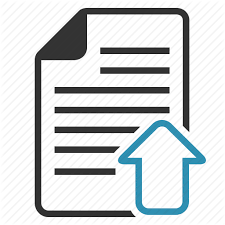PERFORMANCE OF PUBLIC TRANSPORTATION BUS SERVICES IN MAMUJU CITY THROUGH THE COVID-19 PANDEMIC
Case Study: PO. Bintang Timur Bus of the Mamuju-Makassar Route
Abstract views: 235 | pdf downloads: 632
Abstract
Interactions that occur between traffic components, namely, humans, vehicles, and roads, can cause transportation problems when not arranged properly. Examples of problems that can occur when there is an imbalance between supply and demand between these components. In this Covid-19 era, transportation is one of the biggest spreads of the virus. This resulted in a significant decrease in revenue for passenger transport. The method used is a quantitative method. The process of collecting primary data from the observations of the research object is carried out directly based on the parameters that have been determined. Freight Service Frequency, Stop Time, Number of Operating Vehicles, Load Factor, Transport Travel Duration, Time Between Vehicles, Transport Service Time, and Operational Speed are the parameters used in evaluating the performance of public transportation services. The results of this study generated that the operational performance of the Bintang Timur bus had an average load factor of 48.23% with the capacity of AKAP public transport buses, especially the Bintang Timur buses, which was 18 seats. Then the average bus speed is 42.84 km/hour, then the frequency value is 1 vehicle/day this happens because the average headway value for the Mamuju-Makassar terminal route is 11 hours. Then the average service time is from 20.00-06.00 WITA with the average travel time of the Bintang Timur AKAP bus in each segment is 43.44 km/hour, and for the results of the effectiveness of the health protocol rules at the terminal already comply with the rules, then the protocol rules If the bus does not comply with these rules, it can be categorized as a bus, it is enough to comply with the health protocol rules.
References
Aldila, R.P & Joni, A. (2020). Kinerja Angkutan Umum AG (Anjorsari-Gadang) pada Masa Pandemi Covid-19 Kota Malang. Jurnal. Malang: Teknik Sipil, Fakultas Teknik, Universitas Tribuwana Tunggadewi Malang.
Aziz, A.W,.dkk. (2021). Realisasi Penerapan Kebijakan Protokol Kesehatan dalam Salat Berjamaah di Tempat Ibadah Pada Masa Pandemi Covid-19; Studi Kasus Kegiatan Beribadah Pada Desa Masangan Kulon, Jawa Timur dan Desa Talang Makmur, Jambi. Jurnal. Surabaya: Universitas Islam Negeri Sunan Ampel Surabaya.
Dinas Perhubungan Darat. (2021). Kabupaten Mamuju Provinsi Sulawesi Barat.
Departemen Perhubungan. (2001). Panduan Pengumpulan Data Angkutan Umum Perkotaan, Penerbit Direktorat Bina Sistem Lalu Lintas dan Angkutan Kota, Jakarta.
Keputusan Jenderal Perhubungan Darat SK.687/ AJ.206/DRJD/2002. Pedoman Teknis Penyelenggaraan Angkutan Penumpang Umum di Wilayah Perkotaan Dalam Trayek Tetap Dan Teratur. Jakarta: Departemen Perhubungan.
Loru, F.H. (2016). Evaluasi Kinerja Angkutan Umum (Studi Kasus Bus Antar Kota Dalam Provinsi Jurusan Tambolaka-Waikabubak, Sumba NTT). Tugas Akhir. Yogyakarta: Teknik Sipil, Universitas Atma Jaya Yogyakarta.
Peraturan Menteri Perhubungan Republik Indonesia Nomor PM 18 tahun 2020 tentang Pengendalian transportasi dalam rangka pencegahan penyebaran corona virus disease 2019 (covid-19).
Safe, Y.T.dkk. (2015). Evaluasi Angkutan Umum Trayek Terminal Eobobo-Terminal Kupang PP dan terminal Kupang-Terminal Noelbakti PP. Jurnal. Jurusan Teknik Sipil, TST Undana.
Tamin Z. (2018). Perencanaan, Permodelan dan Rekayasa Transportasi. Bandung: Penerbit ITB.
Wiryanto, S. (2020). Evaluasi Tarif Angkutan Penumpang Kota Antar Provinsi Rute Majene-Makassar (Studi Kasus: Bus PO Bintang Prima). Tugas akhir, Universitas Sulawesi Barat.
Copyright (c) 2022 Jurnal Infrastruktur

This work is licensed under a Creative Commons Attribution-NonCommercial-ShareAlike 4.0 International License.














